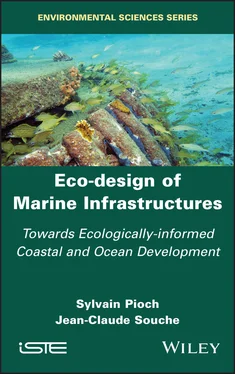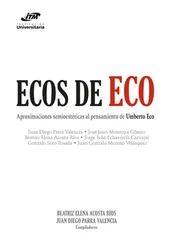It is indeed this general principle of a public “asset”, under the sea, which influences the development of its coastline. It also establishes a binding obligation, applied to the right to develop the coastal sea: the reversibility of the works and the return of the developed natural environment to a state equivalent to its initial state. The concessions or self-authorization to use the nPMD (environment) are therefore temporary, ranging from a few months (beach concessions) to several decades (ports, offshore wind farms).
This “maritime condition”, in particular of the use of the marine environment, introduces a central point: the responsibility of the state in the management and thus the compensation for the damage made to this environment (or domain, due to its attachment to the state). The notion of ownership, which carries with it an obligation of management vis-à-vis society, by calling into question the responsibility of a “polluter” or developer owner, becomes confused in the face of the size and sovereign position of a state that certainly manages, but which “self-controls” (Pioch 2008). Moreover, in a context of decreasing state resources, how can we guarantee effective control of the implementation of compensatory measures? How can we monitor them? Should these legitimate objectives be transferred to marine environment management organizations that have already been delegated by the state, and, if so, how can we succeed, within a constant financial perimeter, in requesting new missions of the field agents of the French Office for Biodiversity, the office de la biodiversité (formerly the agence des aires marines protégées , the French Marine Protected Areas Agency) or the conservatoire des espaces littoraux et des rivages lacustres (CELRL, the French Coastline and Shoreline Conservation Authority)?
Added to this is the difficulty inherent in monitoring the “underwater world”, where the human is a temporary guest and where the degradation of an underwater landscape (still a vaguely defined concept) is not so familiar.
1.6.2. Managing the marine environment: a necessarily integrated approach
At the maritime level, the Marine Strategy Framework Directive (2008/56/EC), adopted in 2008, is a European directive that establishes a framework for community action in the field of marine environmental policy.
This directive is based on a so-called “ecosystem approach”: it aims to achieve a good ecological status for the marine environment by 2020 and to improve the conservation status of marine biodiversity from 2015. The main motivation of the directive is to combat the many threats to the marine environment, such as:
– the depletion or degradation of biological diversity and changes in its structure;
– habitat loss;
– contamination by hazardous substances and nutrients;
– the impacts of climate change.
These points require a global framework to coordinate the local actions of member states.
In contrast, as early as 1975, the Council of Europe recommended a global treatment of the coastline. A European coastal charter was signed by the Conference of Peripheral Maritime Regions in 1982. Chapter 17 of Agenda 21, adopted at the Rio Conference in 1992, recommends ICZM, linked to the protection of the marine environment. An ICZM approach aims to enable a global approach to a coastal territory by taking into account the physical context (geomorphology, weather, tides, marine currents, etc.), the ecological and biogeographical context, the socio-economic context and the legal-administrative context. The integration sought concerns, in particular, the sectoral (interactions between actors), environmental (ecosystem approach), geographical and biogeographical dimensions, as well as the integration of governance (participation of all the actors concerned in the decision), which is an essential dimension. The final objective of ICZM is to build structures and regulatory instruments that will make it possible to guarantee or restore the balance between human activities and human and natural resources, in order to avoid overexploiting resources that are not slightly, easily, slowly or expensively renewable, especially fisheries and tourism resources, with the general aim of ensuring the sustainability of development.
In France, the Coastal Act, adopted in 1986 (Act no. 86-2 of January 3, 1986 relating to the development, protection and enhancement of the coastline), constitutes the reference text for the organization of sustainable development of coastal areas. Let us briefly recall its main objectives, which are:
– the protection of biological and ecological balances, the preservation of sites, landscapes and the cultural and natural heritage of the coastline;
– the preservation and development of economic activities related to the proximity of water;
– the implementation of a research and innovation effort on the particularities and resources of the coastline.
This act applies to municipalities bordering seas and oceans, salt ponds and inland water bodies with an area of more than 1,000 hectares. The municipalities bordering the PMD are considered to be those bordering the sea and the ocean. Consequently, in estuaries, only the municipalities located downstream from the transverse limit of the sea (the limit between the PMD and the public river domain) belong to this category of “coastal municipalities” by right.
Outside of the already urbanized areas, all construction is prohibited in a strip of 100 m from the high limit of the shoreline. This 100 m strip constitutes a minimum which can, through the application of Article L. 146-4-III C. Urb., be extended by the local urban plan, when the sensitivity to the environment or the erosion of the coasts justifies it. This prohibition does not apply to installations requiring the immediate proximity of water. Beyond that, in the areas close to the shore, a regime of limited extension of urban development is provided for. Notable and characteristic areas of the coastal municipalities are preserved by a strict regime of inconstructibility. Implementation of these principles must be completed by the plans for the development of the sea.
Among the normal uses of the PMD between which the administration has to arbitrate, we can mention:
– the implementation of port and maritime safety works;
– the use of beaches for bathing;
– the reception of marine cultures on the favorable spaces;
– retention as a natural area.
1 1 MEDAM (2015). Database for the French Mediterranean Coast (Inventory and Impact of Land Reclamation).
2 2 Ibid.
3 3 This AC J81-032 certification of March 2018 is an optional component that adds to the requirements of the “Clean Ports” CWA AC J 81-030 standard and is part of a prior European “Clean Ports” certification process.
4 4 http://www.greenport.com.
5 5 http://www.portsdebretagne.fr/actualites/deux-ports-bretons-certifies-ports-propres-actifs-enbiodiversite-roscoff-bloscon-et-kernevel/.
6 6 The World Association for Waterborne Transport Infrastructure (PIANC), the oldest international professional organization in the port field: https://www.pianc.org.
7 7 http://www.worldharbourproject.org.
8 8 Center d’études et d’expertise sur les risques, l’environnement, la mobilité et l’aménagement (previously CETMEF, before 2014).
9 9 See Chapter 4of this book on the GIREL project at the port of Fos-sur-Mer.
10 10 We prefer this term to the one used in most English-language eco-engineering publications due to its proximity to the approach of project management for the design of a development project, even though they both designate the same field of reflection.
11 11 http://www.syntec-ingenierie.fr/actualites/2010/09/01/les-cahiers-de-lingenierie-n80septembre-2010/.
Читать дальше












